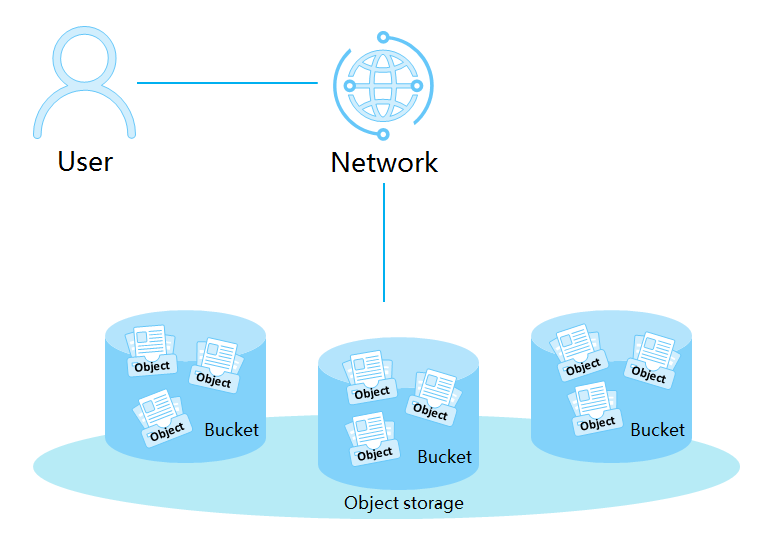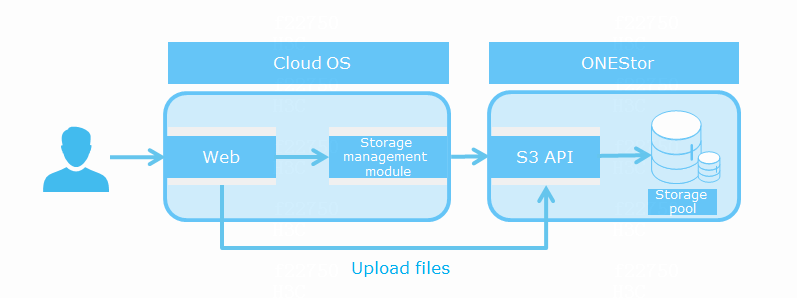About object storage
What is object storage
Object storage provides object-based storage services for users to store and manage files of any types. It provides high-speed direct disk access of block storage and distributed sharing of file storage, and allows users to manage buckets and objects, for example, creating and deleting buckets, and uploading, downloading, and sharing objects.
Concepts
Bucket and object
An object is the basic unit of data storage in object storage and contains the following information:
File name—Unique identifier of an object.
Metadata—A set of key and value pairs used to indicate object attributes, such as last modification time and size.
User data—Data content uploaded by users.
Data uploaded by users are stored as objects in buckets, containers of objects. Each bucket has a flat architecture and does not provide any directory hierarchy as in the file system. Each bucket has its own attributes, such as access permission and storage capacity.
As shown in Figure-1, in object storage, a user uploads data through the API. Then, the system saves the data as objects in the corresponding buckets and returns the object URLs to the user for data reading.
|
For ease of use, the system manages objects as files by adding a forward slash to the object name to separate the bucket name and file name. For example, object abc/123.jpg is a .jpg file named 123 saved in bucket abc. |
AWS S3 Keys
AWS S3 Keys is an authentication method applicable to object storage that uses the S3 API. It uses access keys to identify users and secret keys to encrypt user signatures and object storage keys for user signature verification. You must keep secret keys secret.
Mechanism
CloudOS object storage is based on back-end storage provided by CloudStor, which features industry-leading distributed architecture, automated O&M, linear expansion, high availability, high performance, and unified storage. CloudStor is developed based on Ceph, an open-source storage platform that typically runs on commercial hardware to implement high-performance, high-availability, and high-expandability distributed storage. For more information about CloudStor, see the related documents of CloudStor.
The Web interface and storage management module of CloudOS call the S3 API of CloudStor to create buckets. To upload files, a user performs the upload operation from the CloudOS Web interface, and then the Web interface calls the S3 API directly to transmit the file segments.

